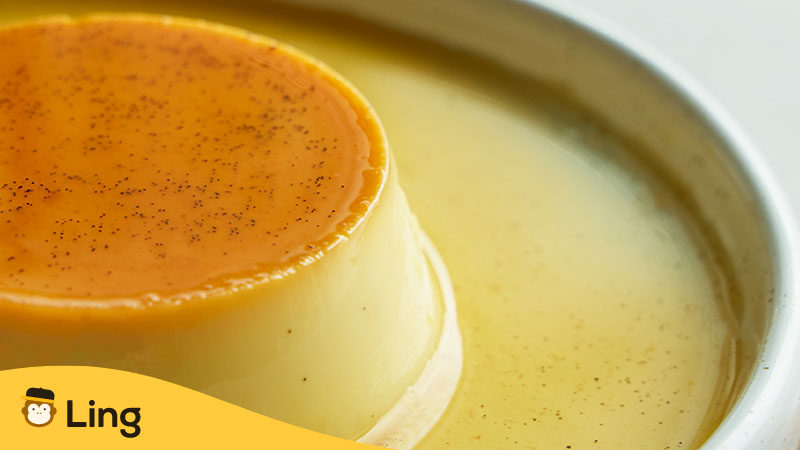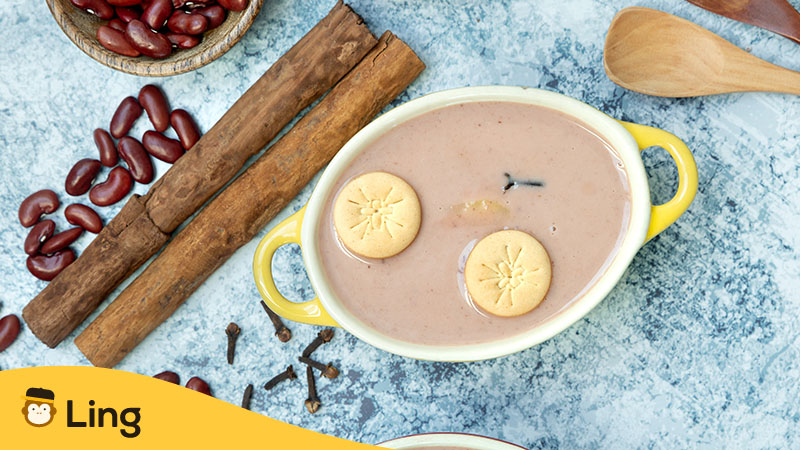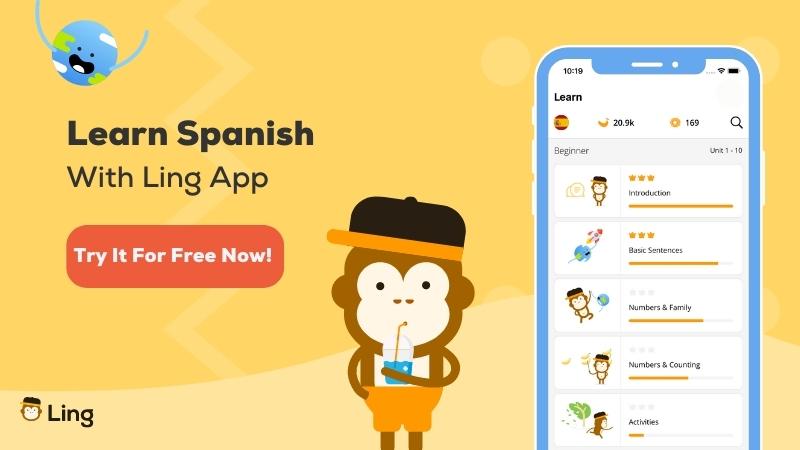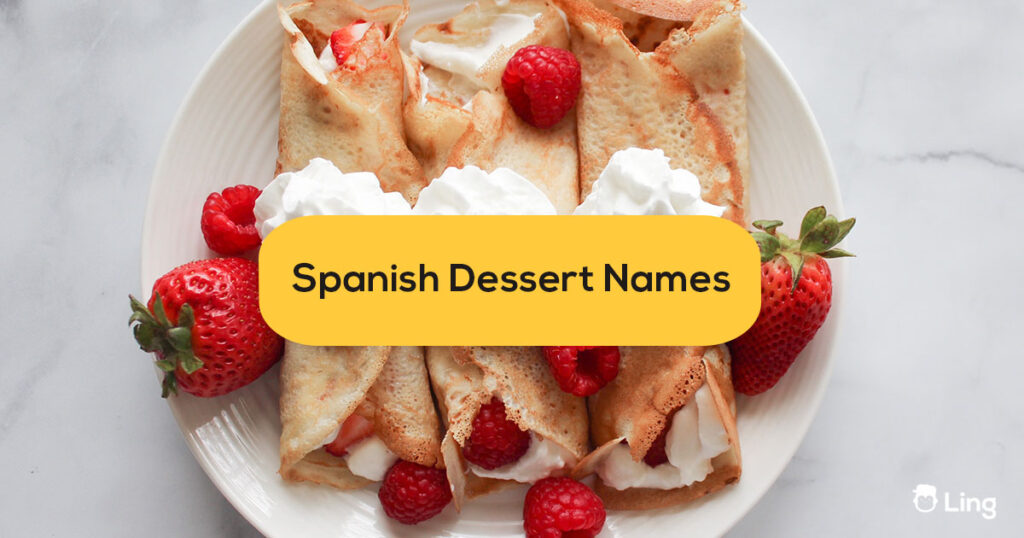There are two types of people in the world. The ones who prefer salty/spicy food, and others whose greatest weakness is pastry. I know people who would give up any culinary delicacy for a piece of cake. So what kind of person are you? Are you one of those with a sweet tooth that can’t resist a delicious dessert? If that’s the case, today we will enrich your vocabulary with Spanish dessert names that may tempt your palate while learning even more about the Spanish language. Here we will share essential vocabulary about pastries in Spanish and popular desserts from Spain and Latin America.
Without further ado, vamos a comenzar!
Spanish Dessert Names
Have you ever thought about the definition of a dessert? Probably not, because by nature, you may already know it. A dessert is a dish that is generally sweet and is usually eaten at the end of a meal or as a snack. There is a great variety of desserts worldwide, as each culture has its own versions. Today we will focus on desserts from Spanish-speaking countries, but before we get into the subject, let’s learn some vocabulary related to this topic.
Traditional Desserts From Spain

Leche Frita
The Leche frita is a traditional dessert of Spanish cuisine. It is made of flour with milk and sugar. After mixing the ingredients, the dough is portioned and fried. This dish is mainly prepared during Lent and is served with a glaze of powdered sugar and cinnamon.
Buñuelos
Buñuelo is a typical Spanish dessert with a circular shape made of fried flour. The dough is prepared by mixing water, milk, egg, and yeast. Sometimes it is stuffed with a sweet filling, but it is not mandatory.
Crema Catalana
The Crema Catalana is a dessert that originated in Catalonia, Spain. Similar to custard creme, it has a crunchy crust made of caramelized sugar. This dessert is quite popular because it combines softness and crunchiness.
Tarta de Santiago
The Tarta de Santiago is one of the most famous desserts in Spanish cuisine. Originally from Galicia, this cake is made with eggs, almonds, butter, and sugar. It has the particularity that it does not contain flour, making it an ideal dessert for people with gluten intolerance.
Traditional Desserts From Latin America

Habichuelas Con Dulce Dominicanas
Habichuelas con dulce is an emblematic dessert in the Dominican Republic. This dessert has a liquid consistency and is made of kidney beans with milk, sugar, and other spices. It is consumed especially during Easter but can be found at different times. It is commonly served with milk cookies and cinnamon pieces as decoration.
Alfajores Argentinos
Alfajores have become a trademark of Argentina. This dessert consists of two or more cookies connected by a filling. Traditionally, the filling used to be exclusively dulce de leche, but nowadays, you can find other types. The alfajores can be covered with chocolate or icing or keep their original coating.
Brigadeiros Brasileños
The brigadeiro (Brazilian Fudge Balls) is a typical Brazilian dessert, also known as negrinho, due to its similarity to chocolate truffles. It is made using a mixture of condensed milk and cocoa powder. Its appearance is round, so they are called Brazilian bonbons in some places.
Natilla Colombiana
Colombian custard is a creamy dessert made with milk, eggs, and sugar, simmered over low heat. It is originally from Spain, but after its adaptation, its preparation has varied slightly according to the region of Colombia where it is prepared. This type of dessert is usually served, especially during the Christmas season.
Spanish Desserts Adopted In Latin America
It is no secret that Spain greatly influences Latin American countries, not only in culture and architecture but also in gastronomy. Among the many delicacies coming from Spain, desserts are no exception. One example is Arroz con Leche (rice pudding), a dish made of milk, rice, sugar, cinnamon, and lemon rind – this dessert is representative of Spanish cuisine. Another well-known dessert in Spanish culture that many Latin American countries have adopted is churros.
The churro is a dessert called “dulce de sartén” because it is made by frying it in oil. Generally, the churro is made of flour, oil, and salt. They can be shaped as a stick, in ribbons or spirals. Depending on the type, they can be filled or coated with sugar, chocolate, custard, or caramel sauce.
¡Ahí lo tienes! And there, you have some basic vocabulary and delicious desserts to sweeten your Spanish learning journey. Now the question is …. can you describe and talk about your favorite dessert in Spanish? If not, then check out our most recommended app below!
Talk About Your Favorite Spanish Desserts With Ling

Would you like to be able to talk about your favorite Spanish dishes fluently? Then it would be best if you had a tool that not only allows you to learn new vocabulary but also allows you to exercise your speaking skills. This is where the Ling app comes in handy!
Ling offers multiple activities to help you learn Spanish vocabulary and improve your pronunciation by receiving instant feedback. Ling’s lessons are made in collaboration with native Spanish-speaking educators to fulfill your needs as a learner. In addition, Ling has bite-size lessons you can complete anywhere in 15 minutes.
If you want to learn even more, combine your Ling lessons with our weekly blogs, where you will learn vocabulary, grammar, and everything you need to speak Spanish efficiently.
You can download it free from the App Store or Play Store. And start learning Spanish immediately.
¡Hasta la próxima semana! Happy learning!








